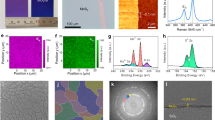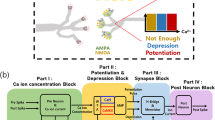Abstract
Neuromorphic computing systems are the future of the technological revolution due to their containment of multiple processing layers, low energy consumption, high performance, adaptability, faster data processing and ability to work in parallel. Neuromorphic computing mimics the way information is processed inside the human brain compared to Von Neumann architecture. Von Neumann architecture has several disadvantages like high power consumption, slow speed, low performance, and a lower density of information to be processed. Because of above arguments, neuromorphic computing has become the new architecture for processing. Neural computing is the mainstay of any type of Artificial Neural Networks (ANNs) as it processes information in the same way that biological neural systems such as the brain. This is what makes it unique from any other system. ANNs consists of two main parts, neurons and synapses, just like biological neural networks in the human brain. In the past decade, ANNs depended on transistors in their manufacture, but after the discovery of the memristor and its advantages such as nanoscale, low energy consumption, low emitted heat, non-volatile memory, high performance and high storage space, it became a good alternative to the transistor and this will increase effectiveness of Von Neumann structure. In this paper, an electrical synapse circuit consisting of two transistors of MOSFET type and a Pt-Hf-Ti memristor (2T1M synapse) is used. This work is done on Cadence virtuoso simulation environment using Verilog-A VTEAM model for memristor modeling. This paper shows practical results of using Pt-Hf-Ti memristor in 2T1M neuromorphic synapse, as the Verilog-A VTEAM model is based on experimental data rather than other literature results based on simple simulation model. The simulation results reveal that, symmetric read signals used before in literature can’t be applied to the Pt-Hf-Ti memristor as the device is asymmetric by its nature. However, a small pulse duration read signal can be applied without causing destruction to the ANN weight stored in the memristor.
Access this chapter
Tax calculation will be finalised at checkout
Purchases are for personal use only
Similar content being viewed by others
References
Basheer, I.A., Hajmeer, M.: Artificial neural networks: fundamentals, computing, design, and application. J. Microbiol. Methods 43(1), 3–31 (2000)
Hassan, A.H., Mostafa, H.: Nondestructive reading and refreshment circuit for memristor-based neuromorphic synapse. In: 2019 IEEE 62nd International Midwest Symposium on Circuits and Systems (MWSCAS), Dallas, TX, USA, pp. 642–645 (2019)
Krestinskaya, O., James, A.P., Chua, L.O.: Neuromemristive circuits for edge computing: a review. IEEE Trans. Neural Netw. Learn. Syst. 31(1), 4–23 (2020)
Strukov, D.B., Snider, G.S., Stewart, D.R., Williams, R.S.: The missing memristor found. Nature 453(7191), 80–83 (2008)
Kvatinsky, S., Talisveyberg, K., Fliter, D., Kolodny, A., Weiser, U.C., Friedman, E.G.: Models of memristors for SPICE simulations. In: 2012 IEEE 27th Convention of Electrical and Electronics Engineers in Israel, Eilat, pp. 1–5 (2012)
Aloysius, N., Geetha, M.: A review on deep convolutional neural networks. In: 2017 International Conference on Communication and Signal Processing (ICCSP) (2017)
Gu, J., et al.: Recent advances in convolutional neural networks. Pattern Recogn. 77, 354–377 (2018)
Pfeiffer, M., Pfeil, T.: Deep learning with spiking neurons: opportunities and challenges. Front. Neurosci. 12(774), 1–18 (2018)
Shrestha, A., Mahmood, A.: Review of deep learning algorithms and architectures. IEEE Access 7, 53040–53065 (2019)
Soudry, D., Di Castro, D., Gal, A., Kolodny, A., Kvatinsky, S.: Memristor-based multilayer neural networks with online gradient descent training. IEEE Trans. Neural Netw. Learn. Syst. 26(10), 2408–2421 (2006)
Zhang, Y., Wang, X., Friedman, E.G.: Memristor-based circuit design for multilayer neural networks. IEEE Trans. Circuits Syst. I Regul. Pap. 65(2), 677–686 (2018)
Prezioso, M., Merrikh-Bayat, F., Hoskins, B., Adam, G., Likharev, K.K., Strukov, D.B.: Training and operation of an integrated neuromorphic network based on metal-oxide memristors. Nature 521(7550), 61–64 (2015)
Hu, M., Chen, Y., Yang, J.J., Wang, Y., Li, H.H.: A compact memristor-based dynamic synapse for spiking neural networks. IEEE Trans. Comput. Aided Des. Integr. Circuits Syst. 36(8), 1353–1366 (2017)
Kvatinsky, S., et al.: VTEAM: a general model for voltage-controlled memristors. IEEE Trans. Circ. Syst. II: Express Briefs 62(8), 786–790 (2015)
Yalon, E., et al.: Resistive switching in probed by a metal–insulator–semiconductor bipolar transistor. Electron Device Lett. 33(1), 11–13 (2012)
Mohammad, B., et al.: State of the art of metal oxide memristor devices. Nanotechnol. Rev. 5(3), 311–329 (2016)
Wu, L., Liu, H., Li, J., Wang, S., Wang, X.: A multi-level memristor based on Al-doped HfO 2 thin film. Nanoscale Res. Lett. 14(1), 1–7 (2019)
Abdelmagid, Y.K., et al.: Investigation of DW Spintronic memristor performance in 2T1M neuromorphic synapse. In: 2020 2nd Novel Intelligent and Leading Emerging Sciences Conference (NILES), pp. 573–577. IEEE, October 2020
Acknowledgement
This work was partially funded by ONE Lab at Zewail City of Science and Technology and Cairo University, NTRA, ITIDA, ASRT, Mentor Graphics, NSERC.
Author information
Authors and Affiliations
Corresponding author
Editor information
Editors and Affiliations
Rights and permissions
Copyright information
© 2023 The Author(s), under exclusive license to Springer Nature Switzerland AG
About this paper
Cite this paper
Gamal, H.A., Mostafa, H., Haggag, A. (2023). 2T1M Neuromorphic Synapse with Pt-Hf-Ti Memristor Model. In: Valle, M., et al. Advances in System-Integrated Intelligence. SYSINT 2022. Lecture Notes in Networks and Systems, vol 546. Springer, Cham. https://doi.org/10.1007/978-3-031-16281-7_68
Download citation
DOI: https://doi.org/10.1007/978-3-031-16281-7_68
Published:
Publisher Name: Springer, Cham
Print ISBN: 978-3-031-16280-0
Online ISBN: 978-3-031-16281-7
eBook Packages: EngineeringEngineering (R0)




